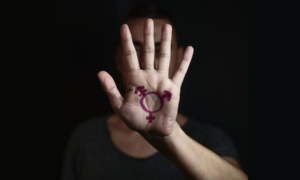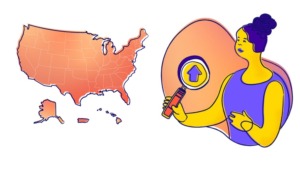 I was looking for a pithy way to start my column about disproportionate minority contact and detention in the juvenile justice system. The obviousness of how unbalanced this aspect of our society’s approach to justice is rises, in my mind at least, to ludicrous heights.
I was looking for a pithy way to start my column about disproportionate minority contact and detention in the juvenile justice system. The obviousness of how unbalanced this aspect of our society’s approach to justice is rises, in my mind at least, to ludicrous heights.
I thought I’d start with the history of the phrase, “Driving While Black”, and use that as an example most people would understand. The origins were a little elusive. It appears to have come into existence in the 1990s, although the practice of racial discrimination by law enforcement is of course much older. A few sources trace it to a story from 1990 in the New York Times and a little digging found the article from May of that year.
”’We get arrested for D.W.B.,’ said a 16-year-old named Steve. ‘You know, driving while black,’” is the line credited as the first print reference to the phenomena, which involved the shooting of a 16-year-old boy by police.
Interestingly, I came across another phrase that is even more illustrative of the state of African American youth in this country, “Breathing While Black.” I found this more sinister somehow, and not as easy to laugh off, particularly when we look at the realities of detention.
My search was triggered by a story written by Spike Bradford on the Reclaiming Futures website. Bradford, a data analyst, discusses two recent reports by the Justice Policy Institute, the first report explores states that have reduced levels of confinement, while the second focuses specifically on reforms in Connecticut.
Despite improvements around the country, including decreasing rates of confinement, a lower crime rate, and the growth of programs that seek to divert youth from crime, over-incarceration of African American youth continues. “In fact, even amongst states that have lowered youth confinement by more than half, the disproportionality of incarcerated youth of color has gotten worse” Bradford writes.
This trend was addressed by the federal government as far back as 1988, yet the impact of policies has been negligible. Bradford points to two reasons for lack of movement on this issue. First, since consideration of race in sentencing is (rightfully I think) illegal, it can’t be used as a mechanism to reduce the numbers of youth affected. Second, the factors that lead to a youth standing in front of a judge are often outside of the purview of the court.
African American youth are more likely to go to schools with a heavy police presence, and thus have a greater chance of being cited or arrested. They are more likely to be randomly stopped by police, and “less likely to be counseled and released than white youth.” Since they are more likely to be poor and unable to afford good legal counsel, they tend to remain locked up before their trial, a condition that increases the chance of being found guilty and of being incarcerated. This level of contact in turn leads to higher chances of adult involvement with the criminal justice system.
So, the criminalization of Breathing While Black (and increasingly, brown) isn’t going to be easily solved by changes in the law or mandates to somehow “make things better.” No, it is going to take citizens standing up and naming the truth of ongoing racial inequalities and systemic barriers to youth of all races being treated the same. That isn’t the work of legislatures, it’s the work of us all.





























